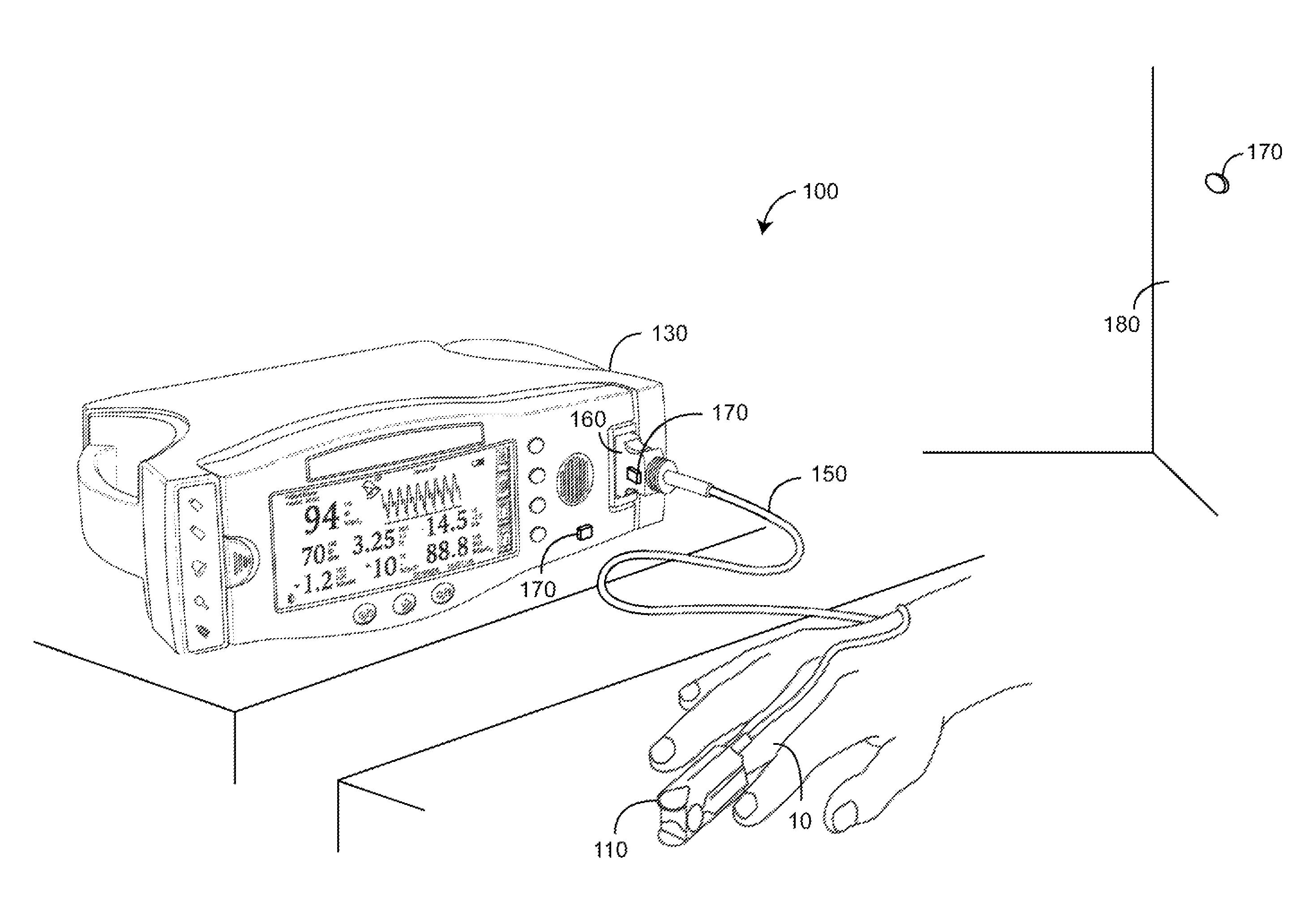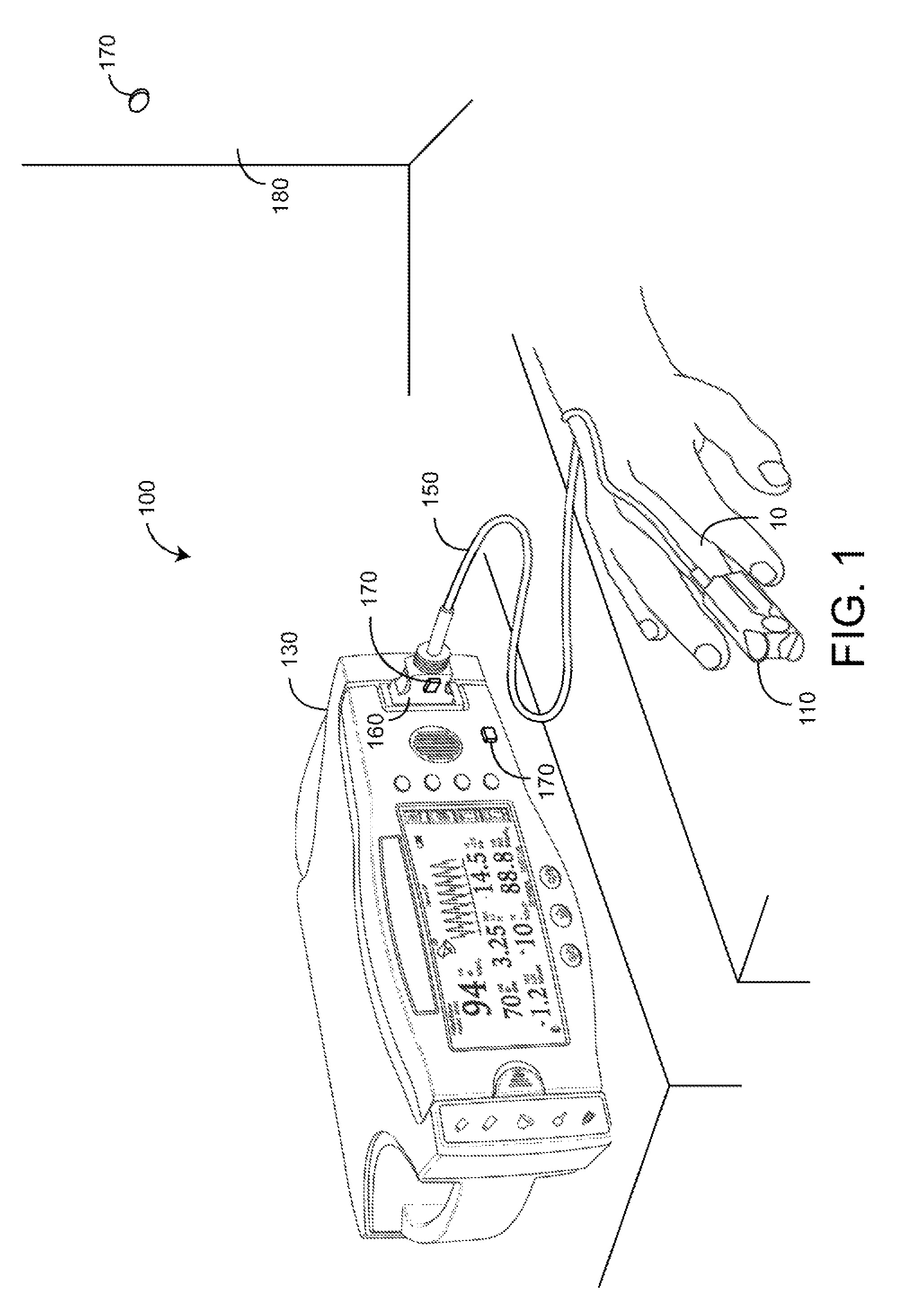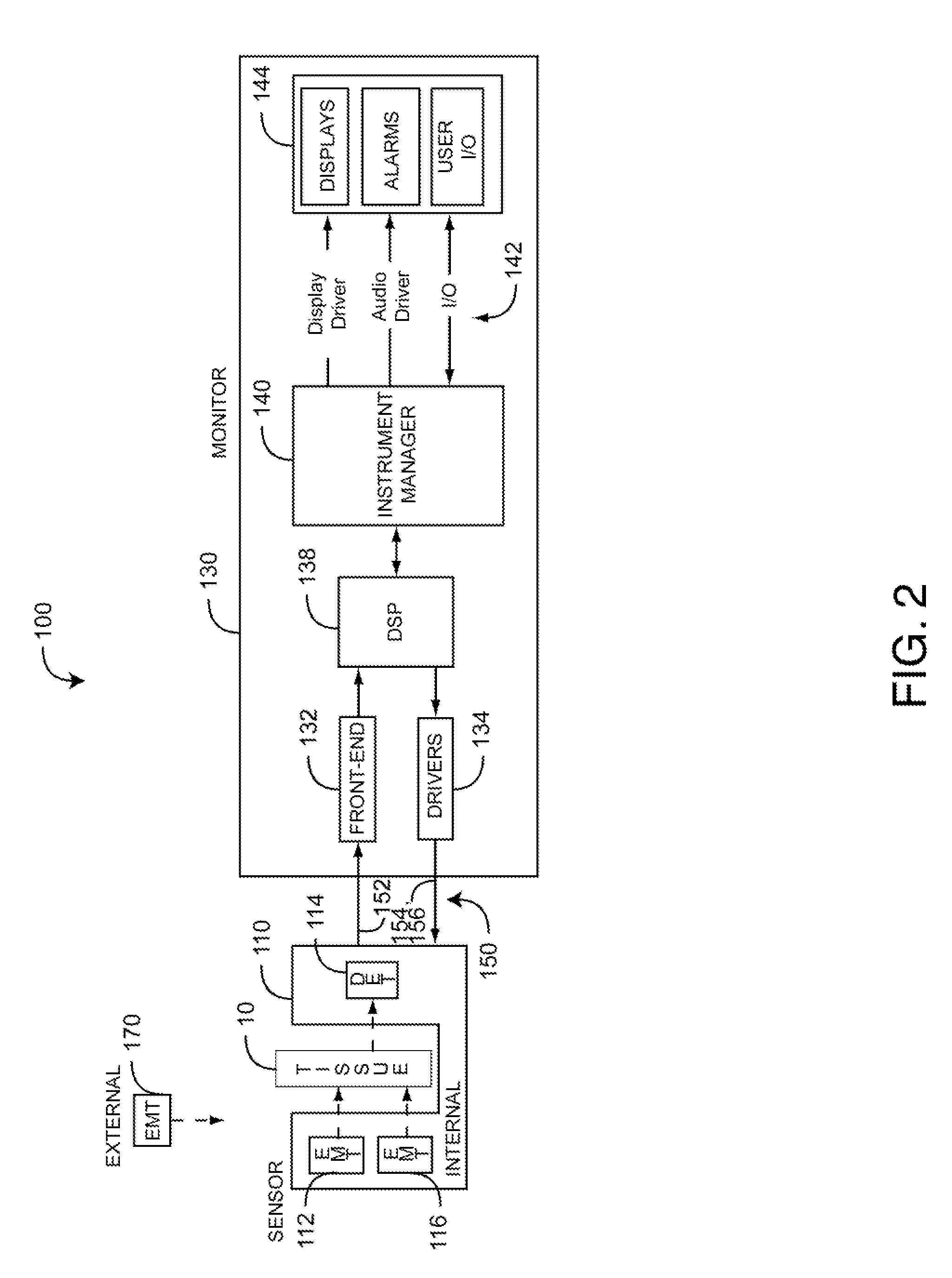Secondary-emitter sensor position indicator
a technology of position indicator and emitter, which is applied in the field of secondary emitter sensor position indicator, can solve problems such as sensor out-of-position errors
- Summary
- Abstract
- Description
- Claims
- Application Information
AI Technical Summary
Benefits of technology
Problems solved by technology
Method used
Image
Examples
Embodiment Construction
[0021]FIGS. 1-2 illustrate a physiological measurement system 100 which measures blood constituents and related parameters, such as oxygen saturation, pulse rate, perfusion index (PI), pleth variability index (PVI™), HbCO, HbMet and Hbt, to name a few. The physiological measurement system 100 includes an optical sensor 110 applied to a tissue site 10, a monitor 130 and a cable 150 that physically and electrically connects the sensor 110 to the monitor 130. Advantageously, the physiological measurement system 100 also utilizes a sensor position indicator responsive to improper placement of the sensor 110 on a finger or other tissue site 10, as described in detail below.
[0022]As shown in FIGS. 1-2, the patient monitor 130 communicates with the sensor 110 to receive one or more intensity signals indicative of one or more physiological parameters. Drivers 134 convert digital control signals into analog drive signals 154 capable of driving primary emitters 112 that transmit optical radia...
PUM
 Login to View More
Login to View More Abstract
Description
Claims
Application Information
 Login to View More
Login to View More - R&D
- Intellectual Property
- Life Sciences
- Materials
- Tech Scout
- Unparalleled Data Quality
- Higher Quality Content
- 60% Fewer Hallucinations
Browse by: Latest US Patents, China's latest patents, Technical Efficacy Thesaurus, Application Domain, Technology Topic, Popular Technical Reports.
© 2025 PatSnap. All rights reserved.Legal|Privacy policy|Modern Slavery Act Transparency Statement|Sitemap|About US| Contact US: help@patsnap.com



